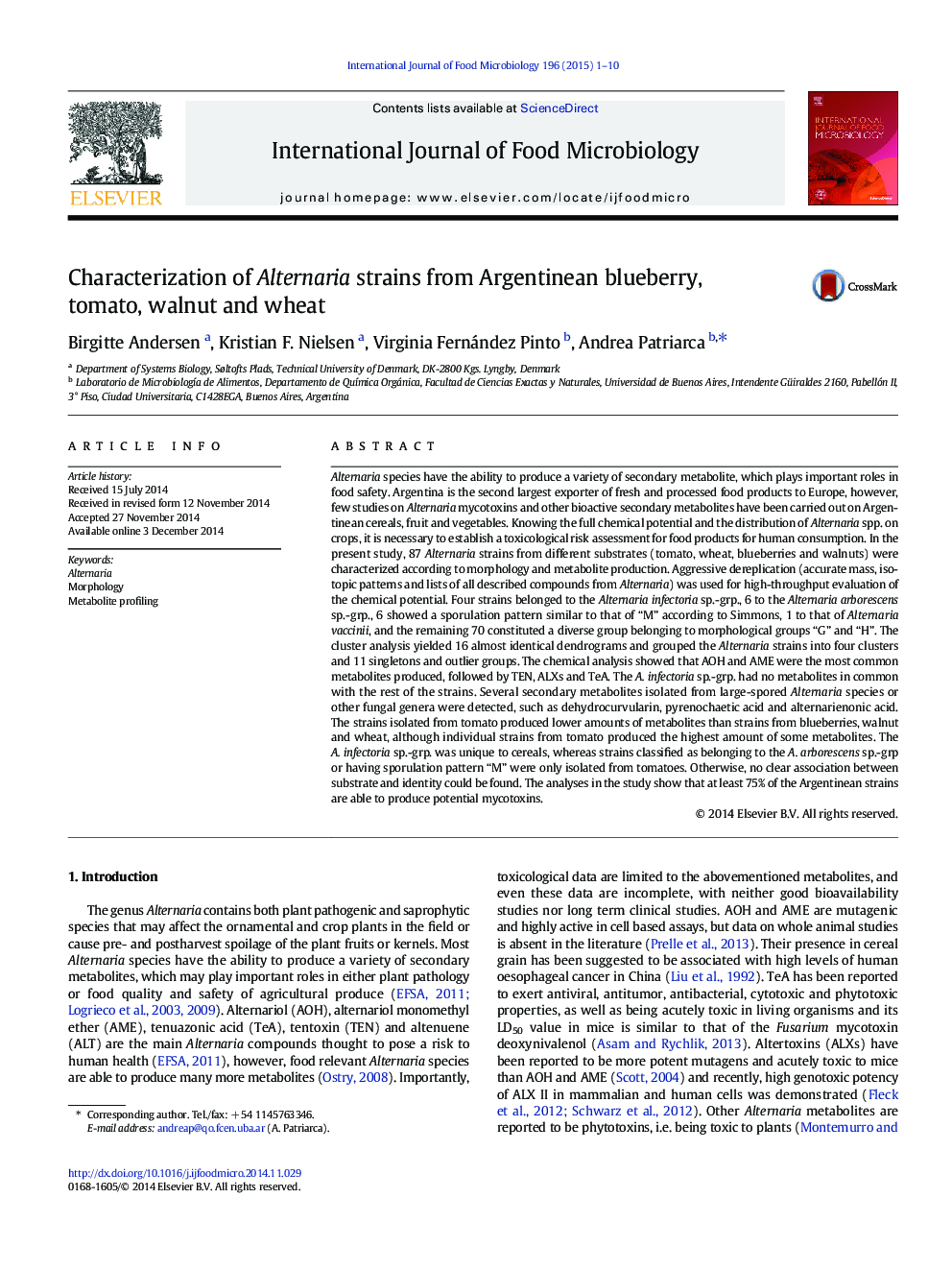| کد مقاله | کد نشریه | سال انتشار | مقاله انگلیسی | نسخه تمام متن |
|---|---|---|---|---|
| 4366770 | 1616587 | 2015 | 10 صفحه PDF | دانلود رایگان |

• 87 Alternaria strains from Argentinean foods were morphologically characterized.
• Aggressive dereplication was used to evaluate the strains' chemical potential.
• 75% of the Argentinean Alternaria strains are able to produce potential mycotoxins.
Alternaria species have the ability to produce a variety of secondary metabolite, which plays important roles in food safety. Argentina is the second largest exporter of fresh and processed food products to Europe, however, few studies on Alternaria mycotoxins and other bioactive secondary metabolites have been carried out on Argentinean cereals, fruit and vegetables. Knowing the full chemical potential and the distribution of Alternaria spp. on crops, it is necessary to establish a toxicological risk assessment for food products for human consumption. In the present study, 87 Alternaria strains from different substrates (tomato, wheat, blueberries and walnuts) were characterized according to morphology and metabolite production. Aggressive dereplication (accurate mass, isotopic patterns and lists of all described compounds from Alternaria) was used for high-throughput evaluation of the chemical potential. Four strains belonged to the Alternaria infectoria sp.-grp., 6 to the Alternaria arborescens sp.-grp., 6 showed a sporulation pattern similar to that of “M” according to Simmons, 1 to that of Alternaria vaccinii, and the remaining 70 constituted a diverse group belonging to morphological groups “G” and “H”. The cluster analysis yielded 16 almost identical dendrograms and grouped the Alternaria strains into four clusters and 11 singletons and outlier groups. The chemical analysis showed that AOH and AME were the most common metabolites produced, followed by TEN, ALXs and TeA. The A. infectoria sp.-grp. had no metabolites in common with the rest of the strains. Several secondary metabolites isolated from large-spored Alternaria species or other fungal genera were detected, such as dehydrocurvularin, pyrenochaetic acid and alternarienonic acid. The strains isolated from tomato produced lower amounts of metabolites than strains from blueberries, walnut and wheat, although individual strains from tomato produced the highest amount of some metabolites. The A. infectoria sp.-grp. was unique to cereals, whereas strains classified as belonging to the A. arborescens sp.-grp or having sporulation pattern “M” were only isolated from tomatoes. Otherwise, no clear association between substrate and identity could be found. The analyses in the study show that at least 75% of the Argentinean strains are able to produce potential mycotoxins.
Journal: International Journal of Food Microbiology - Volume 196, 2 March 2015, Pages 1–10